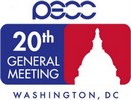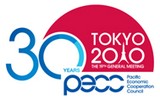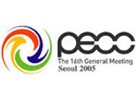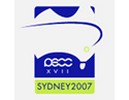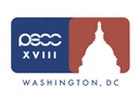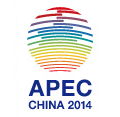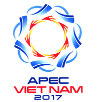Extracts From The PECC Charter
Index:
ARTICLE ONE: PREAMBLE
ARTICLE TWO: OBJECTIVES
ARTICLE THREE: PECC CHARACTERISTICS
3.1 FEATURES OF PECC
3.2 ORGANIZATIONAL STRUCTURE
3.3 PECC MEMBER COMMITTEES
3.4 THE PECC GENERAL MEETING
3.5 THE PECC STANDING COMMITTEE
3.6 THE PECC EXECUTIVE COMMITTEE
3.7 THE PECC TASK FORCES AND NETWORKS
3.8 THE PECC INTERNATIONAL SECRETARIAT
3.9 FUNDING FOR THE INTERNATIONAL SECRETARIAT
ARTICLE FOUR: THE PECC FUND
4.1 THE PECC FUND (LIMITED)
4.2 PECC FUND MANAGEMENT
4.3 FINANCIAL CONTRIBUTIONS TO THE PECC FUND
4.4 FINANCIAL CONTRIBUTIONS TO THE PECC INTERNATIONAL SECRETARIAT
ARTICLE FIVE: AMENDMENTS TO THE PECC CHARTER
________________________________________________________________
ARTICLE ONE: PREAMBLE
Participants in the Pacific Economic Cooperation Council (PECC) from business and industry, government, academic circles and civil society, believe that the realization of the full potential of the Pacific region depends on enhanced economic cooperation based on free and open economic exchange and in a spirit of partnership, fairness and mutual respect.
Participants are mindful of the shared interest in promoting economic cooperation among the economies in the region to bring about greater economic and social benefits and well-being for their respective peoples and contribute to the stability, prosperity and progress of the entire region.
Participation in the PECC process will depend on a commitment to economic cooperation in the Pacific. PECC participants, who have extensive economic activities in the Pacific, will seek to achieve increased, open regional economic cooperation and interaction, while recognizing both the realities of, and the benefits accruing from, global interdependence and continuing to encourage increased economic cooperation and interaction with other nations and regions.
ARTICLE TWO: OBJECTIVES
2.1 The objective of PECC is to promote economic cooperation and the idea of a Pacific Community and to work towards its realization.
2.2 In pursuit of this objective, the PECC process is based on the following premises:
2.2.1 PECC brings together the brightest minds with the most relevant experience of all those who support international cooperation in the Pacific. The respective strengths of business and industry, government, parliamentarians, the media, academic and other intellectual circles and civil society can be better focused to promote sustainable development and stability in the region.
2.2.2 The development of the Pacific cannot take place in isolation from the rest of the world economy and should be consistent with the objectives of improving global growth and trade performance in the spirit of open regionalism.
ARTICLE THREE: PECC CHARACTERISTICS
3.1 FEATURES OF PECC
3.1.1 PECC’s strength lies with its member committees and its region-wide networks of experts. PECC is built on their activities, both domestically and internationally.
3.1.2 The PECC decision-making process is consultative and consensus seeking.
3.1.3 PECC is policy oriented, proactive and pragmatic.
3.1.4 PECC is anticipatory and forward-looking.
3.1.5 PECC seeks to cooperate with other international and regional organizations that have complementary aims and purposes.
3.2 ORGANIZATIONAL STRUCTURE
3.2.1 The PECC organization consists of its:
• Member committees
• General Meeting
• Standing Committee
• Executive Committee
• Networks
• Task Forces
• International Secretariat
3.2.2 PECC members are committees from economies and organizations in the Pacific that have been admitted to PECC.
3.3 PECC MEMBER COMMITTEES
3.3.1 The basic units of the PECC organization are the member committees.
3.3.2 Each PECC member economy has its own member committee, through which it participates in the PECC process.
3.3.3 Each member committee includes stakeholders in the economic development of the Pacific as set out in 2.2.1 above and promotes their active participation in the PECC process.
3.3.4 Associate membership may be granted to committees from other Pacific economies that have demonstrated sustained interest and involvement in PECC activities and programs. Associate members may participate in all PECC activities and programs, except meetings ofthe Standing Committee.
3.3.5 Institutional membership has been granted to PBEC and PAFTAD and may be granted to other organizations and institutions with common aims and objectives. Institutional members do not have voting rights within the Standing Committee.
3.3.6 Unanimous agreement of the Standing Committee is required for PECC membership.
3.3.7 When applications for membership are considered, consideration is given to whether or not the applicant:
• Accepts the objectives of PECC and the principles set out in this Charter;
• Is committed to economic cooperation in the Pacific based on free and open economic exchanges;
• Has extensive economic activities in the region;
• Has established a viable member committee;
• Has made a substantial contribution to a number of PECC work programs, excluding General Meetings, in the previous three years.
3.3.8 When deciding upon a specific application for membership, the Standing Committee gives the fullest consideration to PECC’s capacity to absorb and productively engage the prospective member.
3.4 THE PECC GENERAL MEETING
3.4.1 The General Meeting is the main forum for PECC to develop strategic perspectives to promote the Pacific Community. This includes a broad-based discussion on PECC’s activities.
3.4.2 The General Meeting should ideally take place on an annual basis and the exact schedule of the General Meeting is proposed by the host member committee and decided upon by the Standing Committee.
3.4.3 Participants in the PECC General Meeting are delegates from PECC member committees and observers.
3.4.4 Observers are interested parties or persons who do not belong to PECC member committees.
3.4.5 The agenda for the General Meeting is proposed by the host member committee, developed by the Executive Committee and decided upon by the Standing Committee.
3.4.6 The organization of the General Meeting is the responsibility of the host member committee with the assistance of the PECC International Secretariat.
3.5 THE PECC STANDING COMMITTEE
3.5.1 The Standing Committee is the policy-making body in the PECC organization.
3.5.2 The Standing Committee consists of one representative of each member committee and institutional members of PECC.
3.5.3 The Standing Committee meets once a year at the time of the PECC General Meeting.
3.5.4 The Standing Committee guides the PECC process, the development of the substantive work program, and endorses PECC statements and positions.
3.5.5 The Standing Committee has the discretion to approve representatives of other regional bodies or institutions as participants in the work of the Standing Committee.
3.5.6 The Standing Committee is responsible for the expenditure of funds from the PECC Fund, including the expenditure of funds for the PECC International Secretariat.
3.5.7 The Standing Committee is chaired by two persons who are elected by consensus by its members for a period of 3 years and may stand for re-election once. The co-chairs should provide continuity in leadership and should provide leadership for the organization from both sides of the Pacific. The Standing Committee co-chairs should have adequate institutional support from its member committee.
3.5.8 The co-chairs or their designated representatives from among Standing Committee members preside at all meetings of the Standing Committee
3.5.9 The co-chairs report regularly to the Standing Committee between meetings on activities carried out on behalf of the Standing Committee.
3.5.10 Special meetings of the Standing Committee may be called at the discretion of either of the co-chairs or at the proposal of at least one-third of the Standing Committee with the concurrence of at least two-thirds.
3.5.11 At least two-thirds of the member committees must be represented at a Standing Committee meeting to constitute a quorum.
3.5.12 Standing Committee members who are unable to attend meetings may designate proxies to represent them with full voting rights, provided that advance notice is given to the Chair in writing, by facsimile or email.
3.5.13 In a meeting with a quorum present, any member or proxy may make a motion for consideration by the Committee during that meeting.
3.5.14 In the absence of a consensus, issues requiring a decision of the Standing Committee are put to a vote, with each member committee having a single vote. Decisions require an affirmative vote of at least two-thirds of the committees present, except for decisions regarding membership, which require unanimity as set out herein. In no case shall a motion carry without the affirmative vote of at least half the member committees.
3.5.15 The Secretary General of the International Secretariat or a designated rapporteur drafts the minutes of the Standing Committee meeting and circulates them to members of the Standing Committee as soon as possible after each meeting for comment and approval.
3.6 THE PECC EXECUTIVE COMMITTEE
3.6.1 The Executive Committee is a subset of and operates under the direction of the Standing Committee that oversees the day-to-day work of PECC.
3.6.2 The Standing Committee delegates the following functions to the day-to-day operations to the Executive Committee:
(a) to select and propose PECC’s Task Forces;
(b) to evaluate and coordinate PECC’s work programs;
(c) to guide the operations of the PECC International secretariat and evaluate its performance;
(d) to oversee the use of financial resources and to lead in fund raising activities.
3.6.3 The Executive Committee forms sub-committees, such as an audit committee, as it deems appropriate for fulfilling its role.
3.6.4 Members of the Executive Committee are nominated by Standing Committee members and approved by the Standing Committee by consensus. It should consist of 11 members. The Secretary General (ex-officio) attends in a non-voting capacity.
3.6.5 Attendance at meetings of the Executive Committee is limited to its members and others invited by the co-chairs such as Task Force coordinators.
3.6.6 The co-chairs of the Standing Committee are the co-chairs of the Executive Committee.
3.6.7 The Executive Committee co-chairs preside at all Executive Committee meetings.
3.6.8 All decisions of the Executive Committee are notified to all members of the Standing Committee.
3.6.9 The Executive Committee meets at least twice a year. Where necessary it can conduct its business and make decisions electronically.
3.6.10 Special meetings of the Executive Committee may be called at the discretion of the co-chairs of the Executive Committee with the concurrence of at least two-thirds of the members of the Committee.
3.6.11 A quorum of the Executive Committee consists of at least eight members of the committee.
3.6.12 In a meeting with a quorum present, any member may make a motion for consideration by the Committee during that meeting.
3.6.13 Decisions of the Executive Committee are made on the basis of consensus.
3.6.14 The Secretary General of the International Secretariat drafts the minutes of the Executive Committee meeting and circulates them to members of the Executive Committee as soon as possible after each meeting for comment and approval.
3.7 THE PECC TASK FORCES AND NETWORKS
3.7.1 THE PECC TASK FORCES
3.7.1.1 The PECC Task Forces are the primary mechanisms within PECC for developing policy-oriented recommendations. Task Forces can be proposed by member committees, PECC networks, and the Executive Committee.
3.7.1.2 A proposal for a Task Force must include its funding arrangement.
3.7.1.3 The number and duration of Task Forces are proposed and approved by the Executive Committee.
3.7.1.4 Task Forces are composed of experts from member committees as well as other relevant individuals and institutions.
3.7.2 THE PECC NETWORKS
3.7.2.1 PECC networks comprise experts from member committees and other individuals as well as institutions and companies.
3.7.2.2 The PECC International Secretariat maintains and promotes connectivity within and between PECC’s networks. Member committees and associated institutions coordinate network activities.
3.7.2.3 PECC’s networks function as:
(a) A source for identifying issues and developing ideas that could lead to forming Task Forces;
(b) A pool of expertise that can be drawn upon in the work of Task Forces;
(c) A channel for disseminating the substantive work; and
(d) A means of achieving active and wide stakeholder participation.
3.8 THE PECC INTERNATIONAL SECRETARIAT
3.8.1 The International Secretariat is the administrative unit within the PECC organization and reports to the Standing Committee/Executive Committee.
3.8.2 The role of the International Secretariat is to:
• Provide administrative assistance to the Standing Committee/Executive Committee Chair;
• Facilitate communications among PECC member committees as well as Standing Committee/Executive Committee members
• Assist in organizing meetings for the Standing Committee and Executive Committee;
• Maintain PECC’s historical records;
• Maintain PECC’s networks;
• Provide public relations and outreach services;
• Provide liaison with international institutions; and
• Provide other support as directed by the Standing Committee and Executive Committee.
3.8.3 The International Secretariat is located in Singapore.
3.8.4 The premises of the International Secretariat are provided by the Ministry of Foreign Affairs in Singapore.
3.8.5 The Secretary General is the head of the PECC International Secretariat.
3.8.6 The Secretary General is recruited for a period of 3 years that can be extended.
3.8.7 The Secretary General works under the direction of the Standing Committee/Executive Committee on all aspects of projecting the work of PECC.
3.8.8 The Secretary General prepares a budget for approval by the Standing Committee.
3.9 FUNDING FOR THE INTERNATIONAL SECRETARIAT
3.9.1 The salary of the Secretary General is to be paid out of the Special Fund created for that purpose.
3.9.2 The remaining costs of the International Secretariat, including employment of locally recruited staff, are paid out of the PECC Fund.
ARTICLE FOUR: THE PECC FUND
4.1 THE PECC FUND (LIMITED)
4.1.1 The PECC Fund – PECC Fund (Limited) – was established in February 1988 based on the report of the Study Group on Funding Arrangements at the Standing Committee Meeting held in Osaka on 9 September, 1987.
4.1.2 PECC Fund (Limited) is registered in Hong Kong under Chapter 32 of the Companies Ordinance. The Articles of Association of the PECC Fund Limited are attached as Appendix II.
4.1.3 The Executive Committee of PECC Fund (Limited) consists of the Standing Committee which could delegate that role to the Executive Committee of the Standing Committee.
4.1.4 An Annual General Meeting of PECC Fund (Limited) must be held no later than 15 months after the last Annual General Meeting of the Fund.
4.1.5 The established funding principles of PECC are as follows:
• Committees hosting Task Forces and Projects activities thereof are responsible for the costs associated therewith; and
• Each member committee bears the travel expenses for its own individual members and representatives.
4.1.6 The PECC Fund supplements the present decentralized funding arrangements and is not intended to supplant the traditional funding principles of the PECC.
4.1.7 The PECC Fund is intended to:
• Assist experts and representatives, mainly, but not exclusively, from eligible member committees in developing economies usually from the academic area, to attend and participate in PECC Task Force activities;
• Assist selected experts representing PECC to attend and participate in key APEC activities; and
• Finance the operations of the PECC International Secretariat as set out in Articles 3.9 and 4.4.
4.1.8 The Standing Committee may, from time to time, authorize other expenditures from the PECC Fund.
4.2 PECC FUND MANAGEMENT
4.2.1 Management of the PECC Fund is the responsibility solely of the Standing Committee.
4.2.2 Contributions to the PECC Fund are determined as required by the Standing Committee.
4.2.3 All decisions on the disbursement of Fund monies are made by the Standing Committee or delegated by the Standing Committee to the Executive Committee and administered by the International Secretariat.
4.2.4 Operational Guidelines for applications for financial assistance from the PECC Fund are attached to this document as Appendix III.
4.2.5 The Chair of the Standing Committee has the discretion to disburse monies by way of an advance to the member committee coordinating a project or activity for which disbursal of monies has been approved.
4.2.6 Any member committee that has received an advance of monies from the PECC Fund at the discretion of the Chair of the Standing Committee is required to account to the Standing Committee on the manner in which the monies have been expended.
4.2.7 Decisions concerning the investment of fund money are made by the Standing Committee.
4.2.8 Any two of the following individuals have the authority to sign Fund cheques and other documents as appropriate:
• The Chair of the Standing Committee;
• The Secretary General of the International Secretariat; and
• A person authorized by the Standing Committee.
4.2.9 The Chair of the Standing Committee is responsible for ensuring the proper management of the PECC Fund and makes regular reports to the Standing Committee.
4.2.10 An audit of the PECC Fund is carried out annually by a reputable international audit firm.
4.3 FINANCIAL CONTRIBUTIONS TO THE PECC FUND
4.3.1 In order to preserve the multilateral character of PECC, it is desirable that all PECC members make a basic contribution to the PECC Fund.
4.3.2 The member committees agree among themselves to a suggested schedule and allocation for the basic contributions to the PECC Fund.
4.3.3 Member committees may make additional contributions to the PECC Fund for specific purposes if they so desire. Such contributions do not affect the allocation of basic contributions as set out above.
4.3.4 Non-members may also contribute to the PECC Fund with the approval of the Standing Committee.
4.4 FINANCIAL CONTRIBUTIONS TO THE PECC INTERNATIONAL SECRETARIAT
4.4.1 Member committees contribute to the funding of International Secretariat operations through their contributions to the PECC Fund.
4.4.2 PECC members may make additional contributions directly to the International Secretariat for specific purposes if they so desire.
4.4.3 Non-members may also contribute to the International Secretariat.
ARTICLE FIVE: AMENDMENTS TO THE PECC CHARTER
5.1 Decisions on amendments to the PECC Charter are the responsibility of the Standing Committee.
5.2 Decisions on amendments to the PECC Charter require an affirmative vote of two-thirds of the member committee representatives on the Standing Committee.
Adopted by the PECC Standing Committee, 22 May 1991, Singapore
Amended by the PECC Standing Committee, 17 September 1991, San Diego
Amended by the PECC Standing Committee, 15 April 1998, Seattle
Amended by the PECC Standing Committee, 12 April 2001, Kyoto
Amended by the PECC Standing Committee, 27 November 2001, Hong Kong, China
Amended by the PECC Standing Committee, 4 September 2006, Seoul
Amended by the PECC Standing Committee, 11 May 2009, Washington DC
Annex
Notes to the PECC Charter
The PECC Charter defines the purpose, regulation and structure of PECC. It is not a document for detailing all the procedures and decision making criteria in the organization. That is left to the continuing evolution of good practice, as reported in the minutes and reports of the organization. This builds on the shared trust among the membership, based on their common adoption of the goals of the organization.
The nature of the annual General Meeting changes as a result of this Charter. It returns to its original role of being a clearing house for the work of PECC’s task forces. Its program would be determined by the composition of Task Force activities in the preceding and forthcoming years. The main participants at the Meeting would be PECC member economy representatives. Experts would be invited as appropriate and feasible to comment on past work and the future work program. The success of this approach depends on the selection of topics of Task Force activities which engage the attention of the audience.
The Standing Committee’s role as the highest decision body in PECC is re-affirmed in this new Charter. The Standing Committee (and with delegation to the Executive Committee) is responsible for the design of a work program which contributes to its goals.

